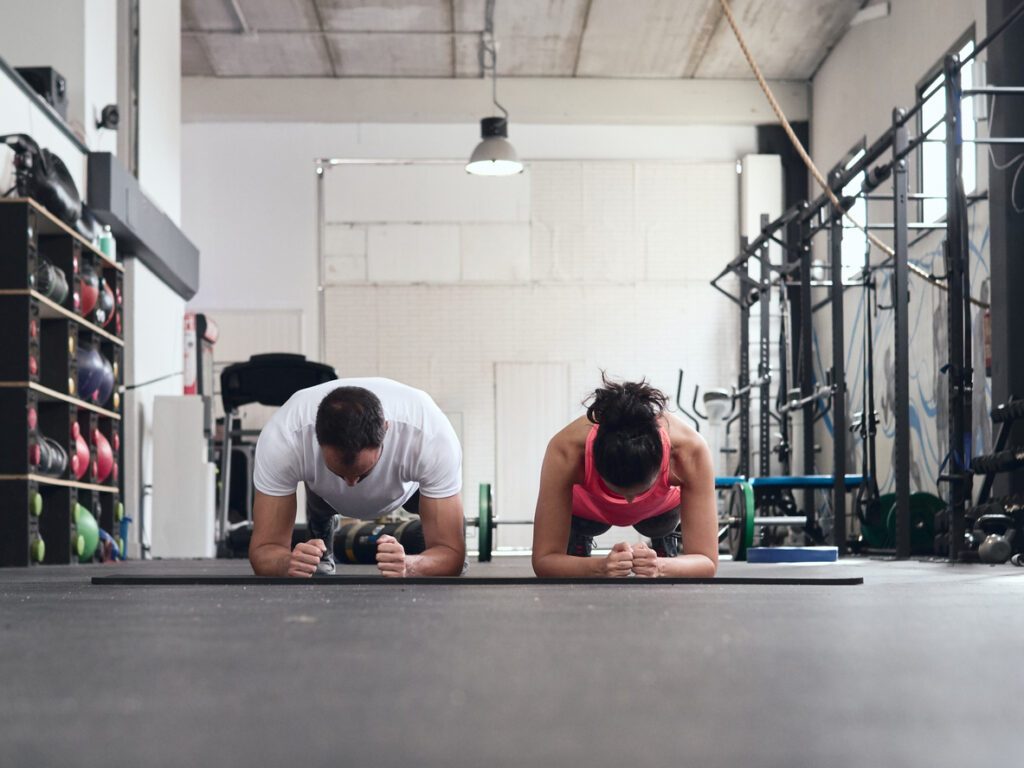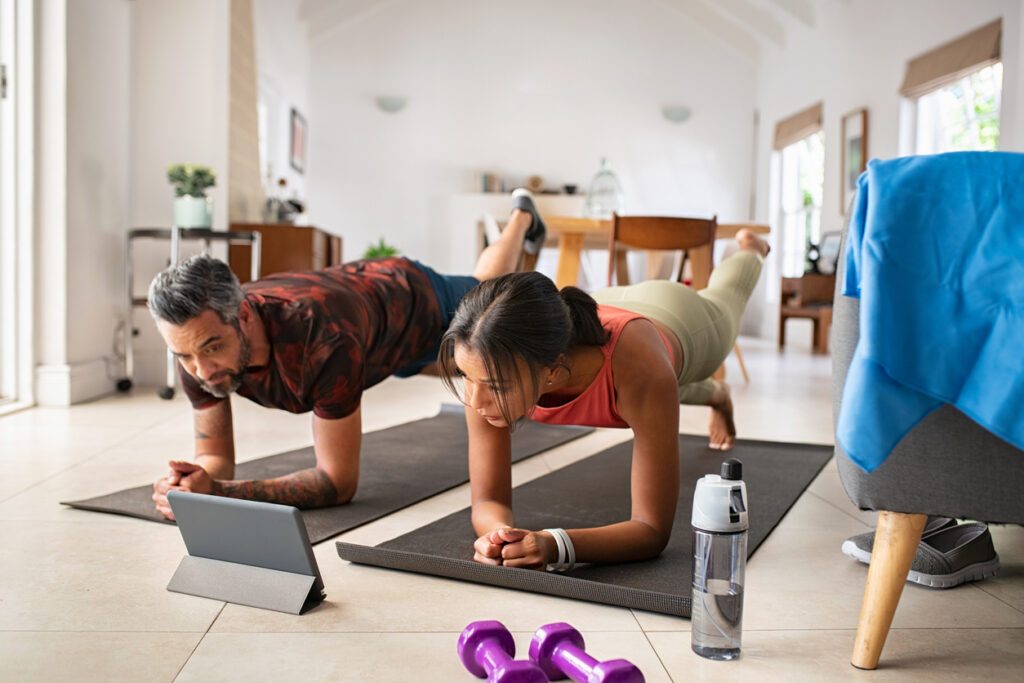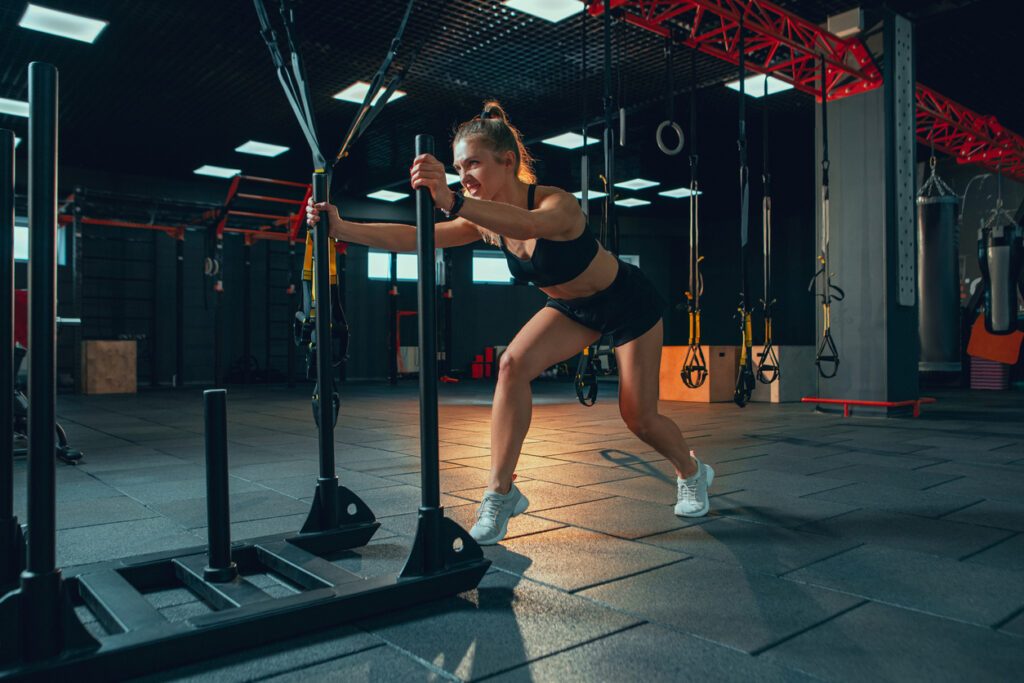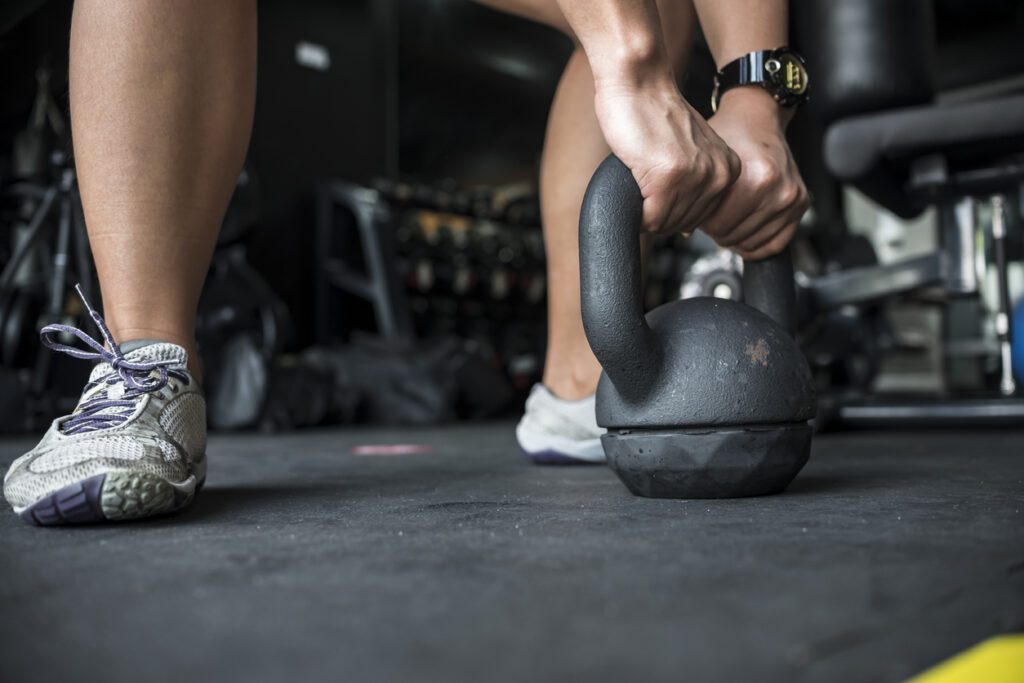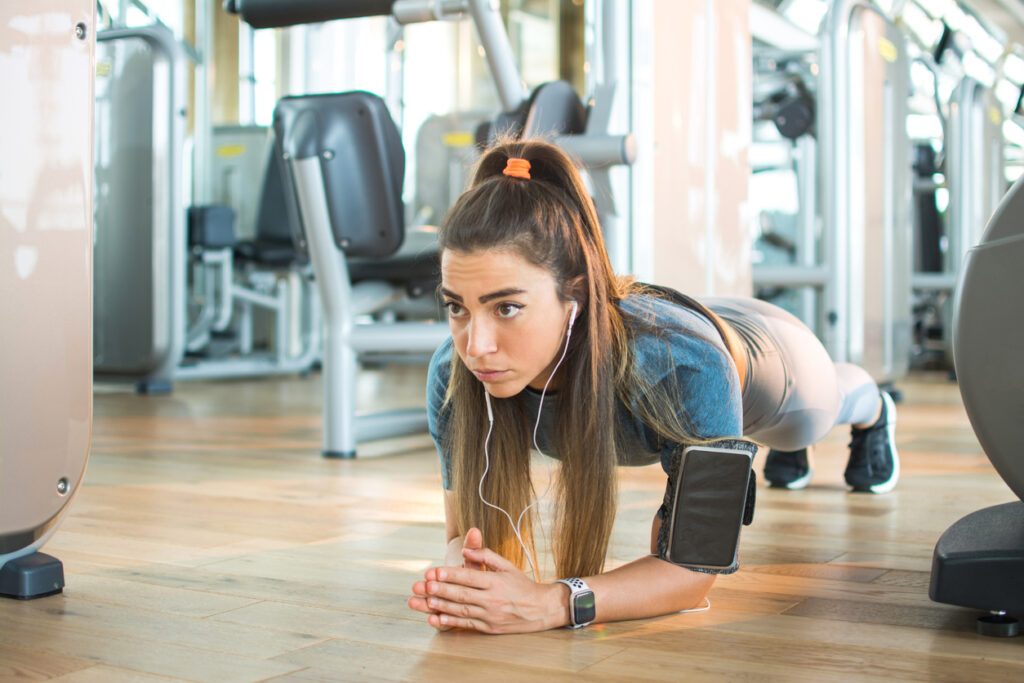
Summary
Welcome / Welcome / Tips for getting started / What is sheathing used for? Everything you need to know about this essential
What is sheathing used for? Everything you need to know about this essential
Core training is a muscle strengthening exercise that works the deep muscles of the abdominal, back and pelvis. It helps improve posture, stability, strength and endurance in these areas.
The sheathing presents numerous benefits for health and sports performance. It helps prevent injuries, relieve lower back pain, improve breathing, burn calories and sculpt the stomach.
But how to practice core training effectively? What are the different types of sheathing? And what are its benefits? Clearly, if you are wondering what the purpose of core training is for bodybuilding, this article is for you. We will explain everything you need to know about core training and its benefits. Ready to sweat? Let’s go!⚡
Summary
The principle of sheathing
The sheathing consists of maintain a static position for a certain period of time, so as to work the core muscles. This includes the abdominal muscles, back muscles, lat muscles and gluteal muscles.
The most common form of core is the plank, facing the ground while standing on the forearms, but there are different core exercises:
THE ventral sheathing ;
THE back sheathing ;
THE lateral sheathing ;
THE dynamic sheathing.
The benefits of sheathing
Strengthens the spine and core
The core works the deep and superficial muscles of the trunk, namely the abdominals, lumbar, glutes and lateral muscles. These muscles have the role of maintain the spine in a neutral position, that is to say without excessive curvature, and to transmit the forces between the upper and lower body.
By practicing sheathing regularly, you strengthen and stabilize your trunk and spine, which allows you to prevent injuries and back pain. Indeed, a strong and stable trunk protects the intervertebral discs, relieves muscle tension, improves posture, reduces the risk of disc herniation, low back pain, sciatica or pubalgia.
Pelvic stability
The sheathing improves the stability of the pelvis, which allows better control of hip and leg movements. A stable pelvis also promotes joint alignment and reduces the risk of injuries to the knees, ankles and pelvis.
Transmission of forces in the body
Core training increases the strength of the abdominal, back and pelvic muscles, which allows you to better transmit and direct forces between the upper and lower body. Greater muscular strength also improves sports performance in activities that require power, speed or explosiveness.
Muscular endurance
The sheathing develops thecore muscle endurance, which allows maintain good posture and stability Longer. Better muscular endurance also makes it possible to resist fatigue and prolong physical effort without losing quality.
Refine your figure and burn calories
The core works the muscles of the abdominal strap, in particular the transverse, the obliques and the rectus abdominis. By practicing core training regularly, you strengthen and tone these muscles, which allows you tohave a flat and firmer stomach.
Sheathing increases the basic metabolism, that is to say the resting energy expenditure. In fact, muscles consume calories even when they are not used. The more muscle mass you have, the higher your basal metabolism. Sheathing therefore allows you to burn more calories daily, which promotes abdominal fat loss and, more generally, weight loss.
Sheathing reduces waist circumference by improving posture, which allows you to stand straighter and reduce sagging stomach. Sheathing therefore makes it possible to refine the silhouette.
Prevent Injuries
The core strengthens and stabilizes the trunk and spine, which reduces stress on intervertebral discs and prevents the risk of disc herniation, low back pain, sciatica or pubalgia.
The sheathing improves blood circulation and oxygenation of the muscles, which promotes muscle relaxation and recovery, to avoid muscle tension linked to stress, fatigue, too intense effort or a lack of warm-up. Sheathing also relieves muscle tension by rebalancing posture and avoiding excessive curvatures of the back.
Improved coordination and proprioception
The core stimulates the central nervous system by putting it in an imbalance situation, which forces it to constantly adjust the contraction of the trunk muscles. That improves coordination, that is to say the ability of the nervous system to harmonize the movements of the different parts of the body.
Proprioception is the body's ability to perceive its position and movements in space. It relies on sensory receptors located in muscles, tendons, joints and skin. The sheathing uses proprioception by putting the body in a situation of instability, which forces it to react to variations in the environment.
Increased respiratory capacity
Doing sheathing allows you to'increase respiratory capacity. It allows, thanks to its action on posture, allows better thoracic opening.
In addition, the cladding uses the inspiratory muscles, that is to say the muscles which allow air to be breathed into the lungs. Doing core training regularly helps strengthen and tone these muscles and, therefore, increase your inspiratory volume. The larger this volume, the more air you can hold in your lungs.
The different core exercises
The ventral cladding
The ventral core, in plank position, is the most common exercise. Here's how to make this essential:
Lie face down on the floor, supporting yourself on your forearms and the balls of your feet. Your arms should be shoulder-width apart.
Keep your body straight and aligned by contracting your abdominals, back and glutes. Look in front of you.
Stay in position as long as possible.
To make the plank exercise more complicated, you can stand on the palms of your hands with your arms straight.
Lateral sheathing
The lateral core works the oblique muscles unilaterally.
Position yourself on the ground, on one side, so that your legs and forearms are on the ground. Your forearm should form a 90 degree angle to your body.
Lift your hips so that you are resting on your forearm and the side of your foot or ankles.
Stay in position as long as possible.
Slowly return to the floor, then do the same on the other side.
The back sheath
As its name suggests, back girdle aims to strengthen the back muscles, particularly the lumbar.
- Lie on your back and lift your pelvis off the floor to be resting on the upper back and feet. Your pelvis should be in a straight line with your body. Align your shoulders, hips and knees. Contract your glutes, abs and back to stay in position.
- Stay in position as long as possible.
Dynamic sheathing
Dynamic cladding involves a dynamic movement, unlike classic cladding where you must maintain a fixed position. With these movements, the deep muscles of the trunk are used more and the effort provided is more intense.
To do this, you can for example lift one leg then the other during a sheathing on the forearms, touch your shoulders during a cladding with outstretched arms or raise and lower your hips during lateral sheathing.
Organize your core workouts
Do you want to incorporate core training into your workout routine? Here are examples of programs you can apply:
For beginners, practice 3 times a week for 10 minutes : alternate 30 seconds of cladding And 30 seconds of rest. Over the sessions, increase the duration of the core and reduce the recovery time.
For an intermediate workout, do core training 4 times a week for 15 minutes : make a circuit with 45 seconds of core Then 15 seconds recovery. To increase the difficulty and challenge yourself, include several different core exercises.
If you are used to core training, you can train up to 5 times a week, over a period of 20 minutes : alternate 1 minute of cladding Then 15 seconds recovery. During your session, combine static core training and dynamic core training.
Mistakes to avoid when sheathing
As with any bodybuilding exercise, it is important to perform the core movement correctly. Otherwise, we are exposed to risk of injury or pain, and we make the exercise ineffective, which can lead to a drop in motivation.
Correct your position
Arching your back or hollowing your stomach can cause lower back pain or increased pressure on the abdominals. See to always keep your back straight and tuck in your stomach, while keeping your body in a straight line.
Also be careful not to lift your butt too much or, conversely, let it fall. By doing this, you will partially disengage the abdominals and mainly solicit the shoulders or lower back. Keep your buttocks aligned with the rest of your body.
Pay attention to breathing
Breathing is very important during exercise. Blocking your breathing can lead to muscle hypoxia or increased blood pressure. Breathe regularly and calmly.
Overtraining
It is risky to do core training every day or to do it for too long. In fact, you can then be in overtraining situation : you are not recovering enough compared to the frequency of your core work. It is imperative to take days off between your sessions, and D'adapt the duration of your gain according to your level and your objectives.
Vary your workout routine
Core training alone does not constitute a complete workout to lose weight and obtain a dream figure. Combine this with bodybuilding sessions during which you work all muscle groups, as well as cardio and mobility sessions.
Conclusion
Core training is a key exercise for strong posture and a slim silhouette. It increases core strength and stability, crucial for back health and movement efficiency. Incorporating various forms of core training, such as back core or dynamic core, enriches your workout, increases muscular endurance and refines your waistline.
By practicing it regularly, you prevent injuries and strengthen your body in a harmonious way. However, you must pay attention to your position during the exercise and to rest between each session for safe and effective progress. The variety of core exercises presented in this article contributes to a balanced workout and visible results.
Request your sheathing from DRIP
Experience a new level of intensity with DRIP, where the core takes on an explosive dimension combined with HIIT and circuit training! In just 45 minutes, our program immerses you in a physical challenge punctuated by seven bases, three rounds, and relentless energy, all under the impetus of our passionate coaches and their catchy playlists.
At DRIP, every minute is an opportunity to push your limits, with a sequence of exercises that maximize your energy expenditure. Our mission is to motivate you to excel, in an energetic and fun atmosphere, accessible to all levels.
So, you like it ? Join us for a unique experience, whether dans notre salle de sport à Monceau ou dans notre nouvelle salle de sport aux Grands Boulevards. You will love to hate us!❤️🔥
Share
Tagged
Read also
follow us
on instagram
To follow all our news,
take advantage of our tutorials and participate
in our many competitions.
BREAKING NEWS!
Receive our newsletter.
